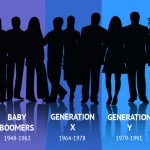Law Firm Diversity: What Can You Do About It?
During the summer of 2001, I was one of 50 law students chosen to work as a summer associate in the Washington, DC office of an international law firm. Coming from Indiana to the place commonly called “Chocolate City,” I expected to see a diverse class of summer associates. But as I looked around the room, I didn’t see any other African Americans and only a few other law students of color. This lack of diversity concerned me, so I boldly expressed my concerns during a training session. I distinctly remember pointing out the irony of a summer associate class that did not reflect the diversity of Washington, DC.
Read More




